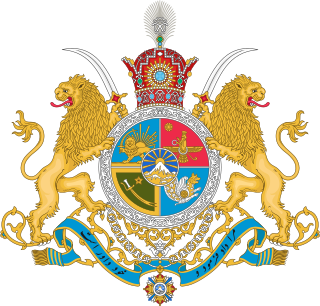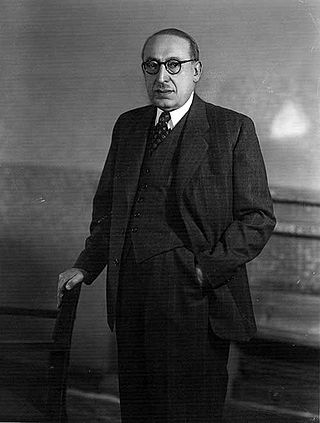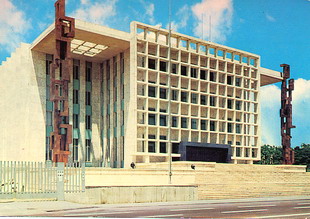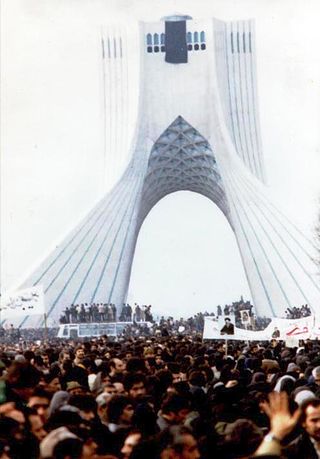| | ||||||||||||||||
| ||||||||||||||||
One vacant seat for Shahsavar | ||||||||||||||||
|---|---|---|---|---|---|---|---|---|---|---|---|---|---|---|---|---|
| Turnout | +60% | |||||||||||||||
| ||||||||||||||||
A by-election was held in September 1974 to fill the vacant seat for Shahsavar in the National Consultative Assembly, the lower house of the Imperial State of Iran.
| | ||||||||||||||||
| ||||||||||||||||
One vacant seat for Shahsavar | ||||||||||||||||
|---|---|---|---|---|---|---|---|---|---|---|---|---|---|---|---|---|
| Turnout | +60% | |||||||||||||||
| ||||||||||||||||
A by-election was held in September 1974 to fill the vacant seat for Shahsavar in the National Consultative Assembly, the lower house of the Imperial State of Iran.
At the time, the ruling New Iran Party led by Prime Minister Amir-Abbas Hoveyda held the absolute majority in the parliament and its opposition, the People's Party, was regarded a "pseudo-opposition" party loyal to the state. [1] The representative of Shahsavar in Mazandaran province who had been appointed to a cabinet office, resigned his seat due to legal requirements. [2] In October 1974, the newly appointed Minister of Interior Jamshid Amouzegar chose his deputy ministers, neither of whom having any experience in holding elections. [2] The next general elections were scheduled in less than a year and though it was not legally mandatory for the government to hold an election for that vacancy, Amouzegar decided to use the occasion to gain experience. [2] Iran's monarch Mohammad Reza Pahlavi agreed that the election could to be held, stating "They will tell you I prefer this man or that woman, this party or that party. This is false. What I want is a clean election". [2]
Nasser Ameri, the new secretary-general of the People's Party, had become overly critical of the governing party to the extent it was perceived to had "endangered the legitimacy of the system". [3] He initially instructed the local of branch of his party in Shahsavar to boycott the by-election for the vacated seat [3] but then was able to persuade the government to allow his party campaign freely. [1] People's Party launched a serious campaign for its candidate, which focused on criticizing the government's ability to "implement efficiently the shah's intentions (manviat-e shahaneh)". [4] The party's candidate Mohammad-Reza Kabiri also acted like a real opposition candidate (in contrast to his role as a "pseudo-opposition") during the campaign and even condemned the administration of Hoveyda. [1] This led the city to undergo an "election fever", and both parties sent several of their leaders to the city to boost the campaign. [1] [4] This was a sign that the New Iran Party's candidate might lose the election, though the former representative of the constituency from the ruling party had won the previous election by a wide margin. [4]

| Candidate | Party | Votes | % | |
|---|---|---|---|---|
| Mansour Khalatbari | New Iran Party | 8,382 | 52.00 | |
| Mohammad-Reza Kabiri | People's Party | 7,736 | 48.00 | |
| Total | 16,118 | 100.00 | ||
| Source: Official Results via Ettela'at newspaper | ||||
Mansour Khalatbari, the candidate of the ruling New Iran Party, said on 28 September "my defeat is utterly impossible" as the ballots were being counted. [5] The opposition candidate Mohammad-Reza Kabiri won a large majority, but the government did not acknowledge this [1] and officially declared that the former had won the election by a narrow margin of 646 votes. [5] People's Party immediately denounced the results and its secretary-general publicly stated that an electoral fraud had happened. [1] The government denied this, and initiated a complaint against a female member of the opposition party for "undermining credibility in the fairness of the elections". [5]
In response to the controversy, Mohammad Reza Pahlavi remarked that the election was fair, but also said the ruling party "must probe this event to see what has caused it. The same applies to the opposition party", adding that "on the basis of sound democracy... one vote more or less is enough to have one elected or defeated. But it is not right to repudiate elections if one loses by even a single vote. Iranians must bear in mind that they must refrain from slander when engaged in free elections". [5]
The opposition party stated that the ballot box in a village with 80 residents, included 1,044 ballots. About two weeks later, the government declared that 444 lived there and other voters had gone to the village to vote. [5]
Asadollah Alam, the founder of People's Party said Ameri has "reached the end of his rope" and he should either choose to let go or become a dissident. [4] On 29 December 1974, the party's central committee discharged Ameri from his office and replaced him with Mohammad Fazaeli. [3] A few days later in January 1975, Ameri died in a car accident. [1]

The Pahlavi dynasty was the last Iranian royal dynasty that ruled for roughly 53 years between 1925 and 1979. The dynasty was founded by Reza Shah Pahlavi, a non-aristocratic Mazanderani soldier in modern times, who took on the name of the Pahlavi language spoken in the pre-Islamic Sasanian Empire to strengthen his nationalist credentials.

The prime minister of Iran was a political post that had existed in Iran (Persia) during much of the 20th century. It began in 1906 during the Qajar dynasty and into the start of the Pahlavi dynasty in 1923 and into the 1979 Iranian Revolution before being abolished in 1989.

Amir-Abbas Hoveyda was an Iranian economist and politician who served as Prime Minister of Iran from 27 January 1965 to 7 August 1977. He was the longest serving prime minister in Iran's history. He also served as Deputy Prime Minister and Minister of Finance in Mansur's cabinet. After the Iranian Revolution, he was tried by the newly established Revolutionary Court for "waging war against God" and spreading corruption on earth (Mofsed-e-filarz) and executed.

The Party of Resurrection of the Iranian Nation, or simply the Rastakhiz Party, was Iran's sole legal political party from 2 March 1975 until 1 November 1978, founded by Mohammad Reza Shah.

Ahmad Qavam, also known as Qavam os-Saltaneh, was an Iranian politician who served as Prime Minister of Iran five times.

The Senate was the upper house legislative chamber in the Imperial State of Iran from 1949 to 1979. A bicameral legislature had been established in the 1906 Persian Constitutional Revolution but the Senate was not actually formed until after the 1949 Constituent Assembly election, as an expression of Shah Mohammad Reza Pahlavi's desire for better distribution of power. Half of the sixty seats in the senate were directly appointed by the Shah, and the other half were directly elected, fifteen represented Tehran, and the rest were elected from other regions.

This article is a timeline of events relevant to the Islamic Revolution in Iran. For earlier events refer to Pahlavi dynasty and for later ones refer to History of the Islamic Republic of Iran. This article doesn't include the reasons of the events and further information is available in Islamic revolution of Iran.

Mohammad Reza Pahlavi, commonly referred to in the Western world as Mohammad Reza Shah, or simply the Shah, was the last monarch of Iran (Persia). In 1941 he succeded his father Reza Shah and ruled the Imperial State of Iran until 1979 when the Iranian Revolution overthrew him, abolished the monarchy and established the Islamic Republic of Iran. In 1967, he took the title Shahanshah and also held several others, including Aryamehr and Bozorg Arteshtaran. He was the second and last ruling monarch of the Pahlavi dynasty. His vision of the "Great Civilization" led to his leadership over rapid industrial and military modernization, as well as economic and social reforms in Iran.

Gholam Reza Afkhami was an Iranian-born American scholar, author, educator, and a Pahlavi Iran government official. He was the senior scholar and director of Social Science Research and International Studies at the Foundation for Iranian Studies. The Foundation for Iranian Studies is a Bethesda, Maryland-based research institution dedicated to the study of Iranian history, culture, economy and politics, created with the financial support from Princess Ashraf Pahlavi.

The Iran Novin Party was a royalist political party in Iran and the country's ruling party for more than a decade, controlling both cabinet and the parliament from 1964 to 1975. The People's Party was regarded as its main opposition.

Parliamentary elections were held in Iran between 30 July and 20 August 1960.

Corruption is a serious problem in Iran, being widespread, mostly in the government. Reformists and conservatives alike – routinely criticize corruption in the government.]

Parliamentary elections were held in Iran in 1961, after the elections the previous year had been annulled by the Shah. The result was a victory for the Party of Nationalists, which won a plurality of the seats.
In 1949 a Constituent Assembly was held in Iran to modify the Persian Constitution of 1906. Shah Mohammad Reza Pahlavi convened the assembly in April; he sought a royal prerogative giving him the right to dismiss the parliament, providing that new elections were held to form a new parliament. He also specified a method for future amendments to the Constitution. The amendments were made in May 1949 by unanimous vote of the Constituent Assembly.

The Imperial State of Iran, officially known in English as the Imperial State of Persia until 1935, and commonly referred to as Pahlavi Iran, was the Iranian state under the rule of the Pahlavi dynasty. The Pahlavi dynasty was created in 1925 and lasted until 1979, when it was ousted as part of the Islamic Revolution, which ended the Iranian monarchy and established the current Islamic Republic of Iran.

People's Party was a liberal political party in Pahlavi-era Iran. It was one of two major parties in the apparent attempt to decree a two-party system by Mohammad Reza Shah, apparently in opposition to the ruling New Iran Party and previously the Nationalists' Party. The party was dissolved in 1975, in order to be merged into the newly founded Rastakhiz Party, the only legal party in the Shah's attempted single-party system.
Reza Azimi was a senior military officer during the reign of the Shah Mohammad Reza Pahlavi. He was a general and held various military and government posts, including commander of the Imperial Iranian Ground Forces and minister of war.

Eskandar Azmoudeh was a Lieutenant-general and one of the senior Iranian soldiers in the Pahlavi period
Asadollah Sanii was the Iranian minister of defense in the 1965 cabinet of prime minister Amir-Abbas Hoveyda.

The sixth Hoveyda government was a cabinet of Iran led by Prime Minister Amir-Abbas Hoveyda that was formed on 27 May 1974 and presented to Shah Mohammad Reza Pahlavi on 29 May. Hoveyda reshuffled in the cabinet on 8 November 1976, replacing all of his ministers. The government was dissolved in August 1977 and replaced by that of new Prime Minister Jamshid Amouzegar.